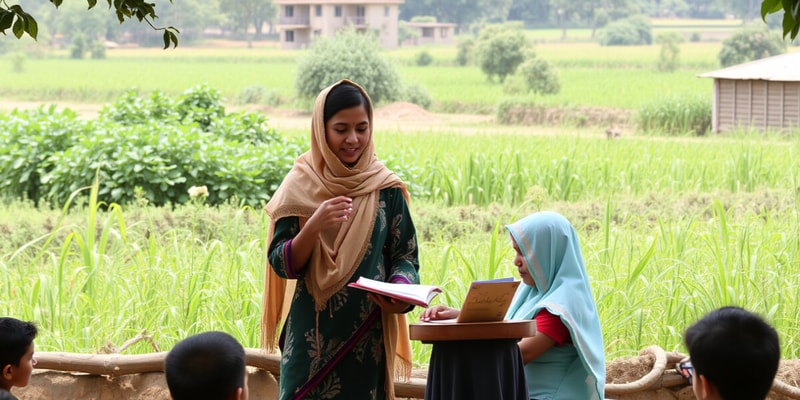Podcast Beta
Questions and Answers
What was the objective of the first phase of the NSEC Development Plan?
During which phase were local and foreign fellowships for trainers conducted?
What is regarded as a significant factor affecting the performance of the school system according to the content?
How many private high school teachers were mass trained in Phase 1?
Signup and view all the answers
What was a requirement for high schools to implement the curriculum properly during Phase 1?
Signup and view all the answers
What was the main intention behind the enactment of Republic Act No. 6054 in 1962?
Signup and view all the answers
How many barrio high schools were established from 1962 to 1970?
Signup and view all the answers
What administrative issue did barrio high schools face due to funding constraints?
Signup and view all the answers
What was the original goal of the barrio high school concept?
Signup and view all the answers
What was one of the findings of the 1988 Appraisal of the Secondary Education Development Sector?
Signup and view all the answers
What was NOT one of the major premises for the development of the Secondary Education Development Program?
Signup and view all the answers
What significant role does the private sector play in secondary education in the Philippines?
Signup and view all the answers
Which statement is true regarding the condition of the secondary education system in the Philippines?
Signup and view all the answers
Study Notes
Rural Education in the Philippines
- In 1962, the Barrio High School Charter was enacted, establishing barrio high schools to make secondary education accessible to rural Filipinos.
- A barrio is a village with 20 or more families, primarily living on mountainsides and lakeshores.
- The goal of the barrio high school was to provide terminal secondary education, preparing students for the workforce.
Challenges in Rural Education
- Barrio high schools were attached to "mother schools" due to funding constraints.
- Mother schools were typically national high schools, carrying out administrative duties and supervision.
- Elementary school heads were appointed as assistant principals for the barrio high schools.
Appraisal of Secondary Education Development
- In 1988, the Asian Development Bank conducted an appraisal of the Secondary Education Development Sector.
- The report highlighted several issues:
- The secondary education system needed improvement.
- Rapid expansion without adequate planning and funding resulted in diverse secondary schools offering varied programs with inconsistent quality.
- The system lacked adequate management and evaluation capabilities.
- The private sector faced challenges in providing secondary education.
The Secondary Education Development Program (SEDP)
- The SEDP was built on four key premises:
- The Program for Decentralized Educational Development (PRODED) aimed to enhance quality and increase student involvement.
- The increasing competitiveness of a technological society demanded a skilled workforce.
- The existing system lacked the capacity to meet these demands.
- The performance of secondary education required significant improvement to reach established goals.
The NSEC Development Plan
- The National Secondary Education Curriculum (NSEC) development plan covered ten years (1983-1993).
- Phase 1 (1983-1988): Preparation for NSEC graduates' entry into the workforce.
- Phase 2 (1989-1993): Implementation of a new secondary education program.
Capability Building in Secondary Education
- Phase 1 of the SEDP aimed to develop every high school with at least 200 students to meet curriculum implementation requirements.
Curriculum Improvement
- The study examined the existing curriculum and its implementation.
- Although multiple variables impact the school system, curriculum content plays a crucial role in shaping these variables.
Staff Development
- Phase 1 (1989-1992): Mass training for private and public high school teachers.
- Phase 2: Advanced management, supervisory skills, and leadership training programs for various school staff.
- Phase 3: Local and foreign professional development opportunities for SEDP trainers, teachers, and supervisors across regions.
Studying That Suits You
Use AI to generate personalized quizzes and flashcards to suit your learning preferences.
Related Documents
Description
This quiz explores the development and challenges of rural education in the Philippines, particularly focusing on the Barrio High School Charter enacted in 1962. It examines the structural relationship between barrio high schools and mother schools, as well as insights from the 1988 appraisal by the Asian Development Bank.




